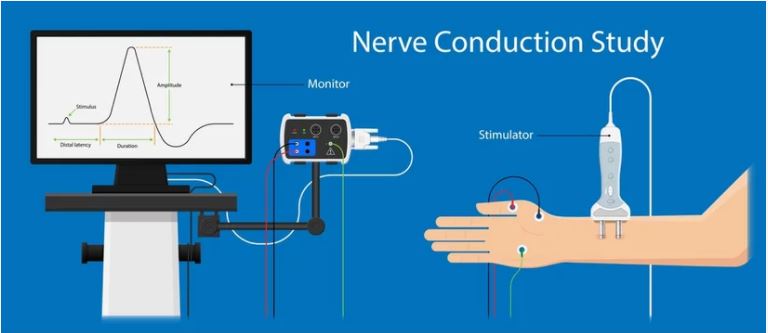Facial nerve conduction study with blink reflex
Facial Nerve Conduction Study with Blink Reflex
The Facial nerve conduction study with blink reflex is used to detect neuropathies, or abnormalities of the peripheral facial or trigeminal nerves, as well as lesions in brain regions, such as those produced by brain strokes and multiple sclerosis. The purpose was to examine the electric response of the nerve or muscle to which the nerve is linked and establish if the nerve impulse is conducting normally, at a slow speed, or not conducting at all, suggesting any nerve injury.

What is the test about?
In this test, an electric impulse is sent to the nerve to assess the muscle response to electrical stimulation of the facial nerve. On the face, recording electrodes are inserted, and the reactions are recorded simultaneously.
Do’s and Don’ts before and during the test
Before the test
- There is no need to fast.
- Avoid using any cream, oil, lotion, or moisturizer on your skin.
- Wear loose-fitting clothes so that your hands and legs may be examined easily.
During the test
- Electrodes (metal disc plates) will be placed on your face.
- You may feel some pain as the electric current flows through your nerves.
- The process will take around 30 minutes.
Are there any side effects associated with the blink reflex test?
The test is typically safe, with no known side effects.
